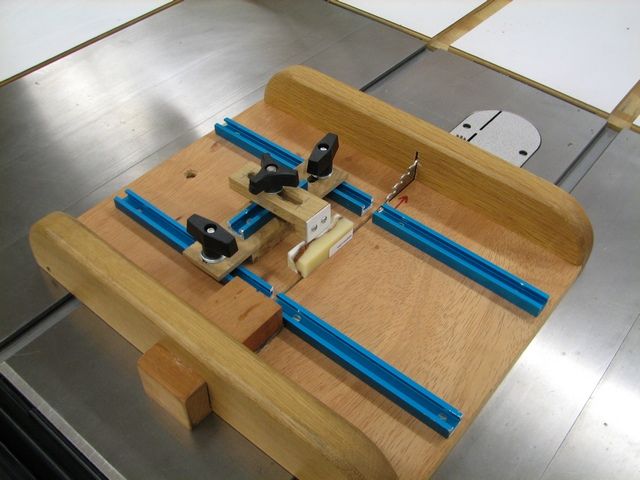Okay.
As many of you know, I am totally clueless and new to woodworking.
I am planning to build a Crosscut Sled for my Kobalt Contractors table saw.
Crosscut saws are almost as unique as fingerprints, there are so many variations out there.
Runners are my major speed bump.
I just can't justify spending $50 for Incra steel runners.
But beyond "use hardwood," everything gets iffy and cloudy.
I saw a YT video, where someone used a piece of cocobolo wood flooring they got from a hardwood flooring dumpster (possible wood source?), and that got me thinking...
could I use a length of hardwood flooring to make my runners???
Here is the list of what my nearest floor shop offers:
http://columber.net/hws2s.html
It's 3/4 thickness, 2 1/4"-5" widths, sold by the square foot...
Which wood would be best to get?
Is Purple heart worth the expense?
The price beats the $8-$10/sq. ft price from the Orange Box store...
And the selection of hardwoods is better. Like I need more confusion of choice...
~M
As many of you know, I am totally clueless and new to woodworking.
I am planning to build a Crosscut Sled for my Kobalt Contractors table saw.
Crosscut saws are almost as unique as fingerprints, there are so many variations out there.
Runners are my major speed bump.
I just can't justify spending $50 for Incra steel runners.
But beyond "use hardwood," everything gets iffy and cloudy.
I saw a YT video, where someone used a piece of cocobolo wood flooring they got from a hardwood flooring dumpster (possible wood source?), and that got me thinking...
could I use a length of hardwood flooring to make my runners???
Here is the list of what my nearest floor shop offers:
http://columber.net/hws2s.html
It's 3/4 thickness, 2 1/4"-5" widths, sold by the square foot...
Which wood would be best to get?
Is Purple heart worth the expense?
The price beats the $8-$10/sq. ft price from the Orange Box store...
And the selection of hardwoods is better. Like I need more confusion of choice...
~M





